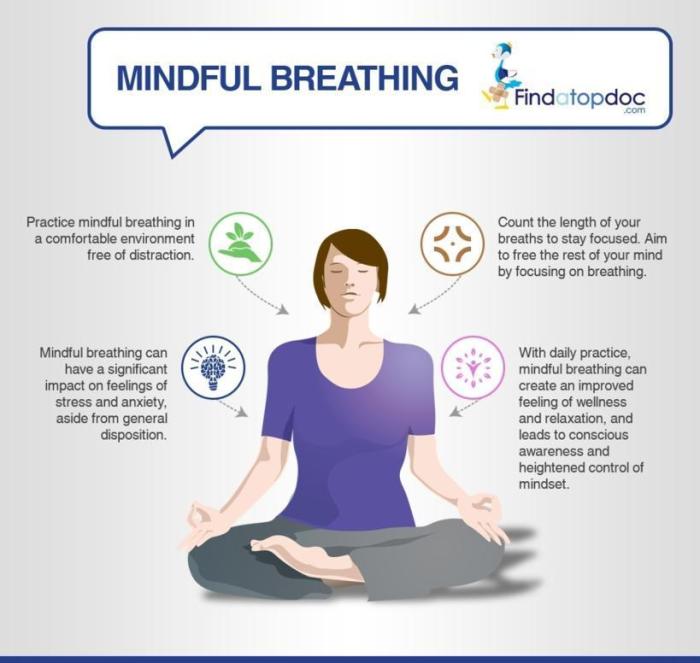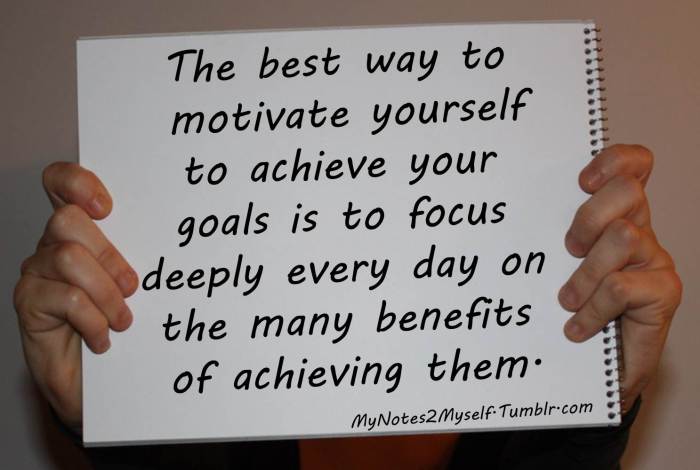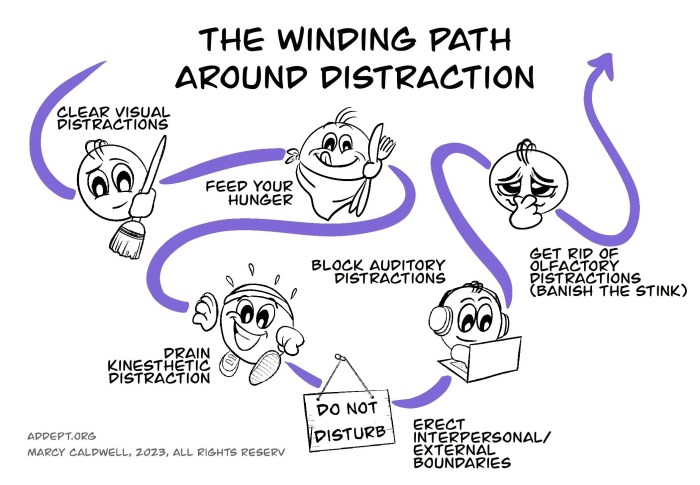10 Simple Techniques to Stay Focused While Meditating introduces you to a world of mindfulness where concentration and inner peace go hand in hand. Dive into the realm of meditation with these expert tips and techniques that promise a transformative experience.
Uncover the secrets of maintaining focus, enhancing mindfulness, and achieving mental clarity through the art of meditation.
Introduction to Meditation
Meditation is a practice that involves focusing the mind on a particular object, thought, or activity to achieve mental clarity, emotional calmness, and overall well-being. It has been practiced for centuries and is known for its numerous benefits, including stress reduction, improved concentration, and increased self-awareness.Staying focused during meditation is crucial as it allows individuals to fully immerse themselves in the practice and experience its benefits to the fullest.
Without proper focus, the mind tends to wander, leading to distractions and hindering the meditation process.
Challenges in Maintaining Focus While Meditating, 10 Simple Techniques to Stay Focused While Meditating
- External Distractions: Environmental factors such as noise, light, or movement can disrupt focus during meditation.
- Internal Distractions: Intrusive thoughts, worries, and emotions can arise, pulling attention away from the present moment.
- Physical Discomfort: Uncomfortable posture or bodily sensations can make it challenging to stay focused during meditation.
- Lack of Patience: Some individuals struggle with impatience and expect immediate results, leading to frustration and loss of focus.
Creating the Right Environment

Creating the right environment is crucial for a successful meditation practice. A quiet and comfortable space can help you focus and deepen your practice. Here are some tips to help you set up the perfect meditation environment.
Choosing a Quiet and Comfortable Space
- Find a peaceful area in your home where you won’t be disturbed.
- Use a cushion or a comfortable chair to sit on during meditation.
- Avoid clutter in the space to promote a sense of calm and serenity.
Eliminating Distractions
- Turn off your phone and any other electronic devices to minimize interruptions.
- Inform others in your household about your meditation schedule to reduce disturbances.
- If outside noise is a problem, consider using earplugs or playing calming music or white noise.
Role of Lighting and Ambiance
- Soft, natural lighting can create a peaceful atmosphere conducive to meditation.
- Consider using candles or dimmable lights to set a relaxing mood.
- Add elements like plants, crystals, or soothing scents to enhance the ambiance of your meditation space.
Breathing Techniques

Breathing techniques play a crucial role in helping you stay focused while meditating. By learning how to control your breath, you can center your mind and improve your concentration. Here, we will explore different breathing techniques that can aid in your meditation practice.
Deep Breathing
Deep breathing is a fundamental technique that can help calm the mind and reduce stress levels. To practice deep breathing:
- Find a quiet and comfortable place to sit or lie down.
- Close your eyes and take a deep breath in through your nose, filling your lungs with air.
- Hold your breath for a few seconds, then slowly exhale through your mouth.
- Repeat this process several times, focusing on the sensation of your breath entering and leaving your body.
Mindful Breathing
Mindful breathing involves paying attention to your breath and being fully present in the moment. To practice mindful breathing:
- Sit or lie down in a comfortable position and close your eyes.
- Focus on your breath as it flows in and out of your body.
- Notice the sensation of the air entering and leaving your nostrils or the rise and fall of your chest.
- If your mind starts to wander, gently bring your focus back to your breath without judgment.
Body Awareness
Body awareness plays a crucial role in meditation as it helps individuals to connect with their physical selves, release tension, and enhance mindfulness. By focusing on body sensations, practitioners can deepen their meditation practice and achieve a greater sense of presence.
Scanning and Releasing Tension
- Start by sitting or lying down in a comfortable position, closing your eyes, and taking a few deep breaths to center yourself.
- Begin scanning your body from head to toe, noticing any areas of tension or discomfort.
- As you identify tense areas, consciously release the tension by breathing into those areas and allowing them to relax.
- Repeat this process throughout your meditation session, continuously checking in with your body and releasing any built-up tension.
Enhancing Mindfulness through Body Sensations
- Focus on the physical sensations within your body, such as the feeling of your breath entering and leaving your nostrils or the sensation of your body making contact with the floor or chair.
- Notice any subtle movements, vibrations, or warmth in different parts of your body without judgment, simply observing them as they arise and pass away.
- By staying present with these sensations, you can cultivate a deeper sense of mindfulness and develop a heightened awareness of the connection between your body and mind.
Mindfulness of Thoughts
In meditation, being mindful of thoughts is crucial to staying focused and present. It involves observing thoughts without attaching to them and learning to redirect the mind back to the present moment.
Observing Thoughts without Attachment
- Acknowledge the thought without judgment or attachment.
- Observe the thought as if it’s passing by like a cloud in the sky.
- Avoid getting caught up in the content or emotions of the thought.
Redirecting the Mind Back to the Present Moment
- Focus on your breath to anchor yourself in the present.
- Use a mantra or a sound to bring your attention back when thoughts wander.
- Engage your senses by noticing the sounds, smells, or sensations around you.
Role of Mindfulness in Maintaining Focus
- Mindfulness helps in cultivating awareness of the present moment.
- It allows you to observe thoughts without getting carried away by them.
- By practicing mindfulness, you can develop better focus and concentration during meditation.
Guided Meditations

Guided meditations are a valuable tool to assist in staying focused during your meditation practice. By following the instructions and prompts provided by a guide, you can maintain your focus on the present moment and prevent your mind from wandering.
Resources for Finding Guided Meditation Sessions
- Apps like Headspace, Calm, and Insight Timer offer a wide range of guided meditation sessions for users to choose from.
- YouTube channels dedicated to meditation, such as The Honest Guys and The Mindful Movement, provide free guided meditations for beginners and experienced practitioners alike.
- Local meditation centers and yoga studios often host guided meditation sessions led by experienced teachers.
Benefits of Incorporating Guided Meditations
- Guided meditations help beginners learn the basics of meditation practice and develop a consistent routine.
- They can deepen your meditation experience by offering different techniques and perspectives that you may not have considered on your own.
- Guided sessions can be particularly helpful for individuals struggling with focus or racing thoughts, as the guidance can anchor the mind and body in the present moment.
Setting Intentions
Setting intentions before a meditation session is crucial for guiding your practice and enhancing its effectiveness. It allows you to establish a clear purpose and direction for your meditation, helping you stay focused and engaged throughout the session.
Tips for Establishing Clear Intentions
- Reflect on your reasons for meditating and what you hope to achieve from the practice.
- Set specific goals or intentions for each meditation session, whether it’s to cultivate gratitude, reduce stress, or increase self-awareness.
- Write down your intentions or affirmations to solidify them in your mind and refer back to them during your practice.
- Avoid setting unrealistic expectations and instead focus on intentions that are meaningful and realistic for you.
Importance of Intentions in Meditation
Setting intentions can serve as an anchor for your focus during meditation, preventing distractions and wandering thoughts. By clarifying your purpose before starting your practice, you create a mental roadmap that guides your attention back to the present moment whenever your mind starts to drift. Intentions help you stay committed to the practice and deepen your connection with yourself, fostering personal growth and inner peace.
Using Mantras or Affirmations
Using mantras or affirmations can be a powerful tool to stay focused during meditation. By repeating a mantra, you can quiet the mind and enhance your ability to concentrate on the present moment.
Examples of Powerful Mantras for Concentration
-
“I am calm and centered.”
-
“My mind is clear and focused.”
-
“I breathe in peace, I breathe out distractions.”
Repeating Mantras for Enhanced Focus
When you repeat a mantra during meditation, you create a rhythmic pattern of thought that helps to block out distractions and maintain focus. The repetition of positive affirmations can also help to cultivate a sense of inner peace and clarity.
Incorporating Movement: 10 Simple Techniques To Stay Focused While Meditating
Incorporating movement into your meditation practice can help enhance focus and concentration. By engaging in gentle movement practices like yoga, you can improve mindfulness and body awareness, ultimately aiding in your ability to stay focused during meditation.
Simple Yoga Poses
- Mountain Pose (Tadasana): Stand tall with feet hip-width apart, grounding down through your feet and reaching up through the crown of your head.
- Child’s Pose (Balasana): Kneel on the floor, bringing your forehead to the ground and stretching your arms out in front of you.
- Seated Forward Bend (Paschimottanasana): Sit with legs extended in front of you, hinging at the hips to fold forward and reach towards your toes.
Relationship Between Movement and Mindfulness
Movement can serve as a gateway to mindfulness by connecting you to your body and breath. As you flow through yoga poses or gentle stretches, you can cultivate a sense of presence and awareness in the present moment. This physical engagement can help quiet the mind and improve concentration during meditation sessions.
Practicing Regularly

Consistency is key when it comes to meditation practice. Regularly setting aside time for meditation can help improve focus, reduce stress, and enhance overall well-being.
Building a Routine
Establishing a regular meditation routine can be achieved by integrating meditation into your daily schedule. Here are some strategies to help you build a consistent practice:
- Set a specific time each day for meditation, whether it’s in the morning before starting your day or in the evening before bed.
- Designate a quiet and comfortable space for meditation to minimize distractions and create a peaceful environment.
- Start with shorter meditation sessions and gradually increase the duration as you become more comfortable with the practice.
- Use reminders or alarms to prompt you to meditate at the designated time.
- Stay committed to your practice, even on days when you may not feel like meditating.
Benefits of Regular Practice
Regular meditation practice can have a profound impact on your focus and overall well-being. Here are some of the benefits:
- Improved focus and concentration, leading to enhanced productivity in daily tasks.
- Reduced stress and anxiety levels, promoting a sense of calm and relaxation.
- Enhanced self-awareness and emotional regulation, allowing you to respond to situations more mindfully.
- Increased feelings of positivity and gratitude, improving your overall outlook on life.
Conclusive Thoughts
Embark on a journey of self-discovery and tranquility as you embrace the 10 Simple Techniques to Stay Focused While Meditating. Elevate your meditation practice, sharpen your focus, and nurture your inner calm with these invaluable insights and practices.